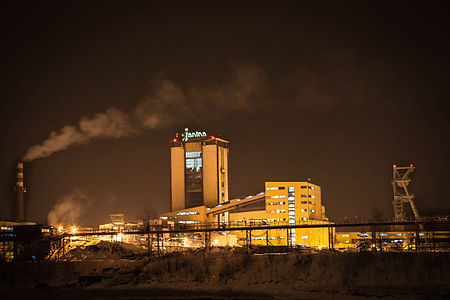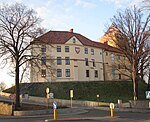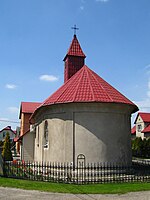Janina Coal Mine

The Janina coal mine is a large mine in the south of Poland in Libiąż, Lesser Poland Voivodeship, 350 km south-west of the capital, Warsaw. The mine has been erected by Compagnie Galicienne de Mines, a French mining company, in 1907. Between 1921 and 1939 the Janina mine was under management of its Polish chief executive, Zygmunt Szczotkowski. During World War II it was repurposed into one of the German Nazi concentration camps. After the war the Janina mine was nationalizated, as all enterprises with over 50 employees had been at that time. Janina represents one of the largest coal reserve in Poland having estimated reserves of 841 million tonnes of coal. The annual coal production is around 2.8 million tonnes.
Excerpt from the Wikipedia article Janina Coal Mine (License: CC BY-SA 3.0, Authors, Images).Janina Coal Mine
Kopalniana, gmina Libiąż
Geographical coordinates (GPS) Address Nearby Places Show on map
Geographical coordinates (GPS)
| Latitude | Longitude |
|---|---|
| N 50.0921 ° | E 19.332 ° |
Address
Kopalniana
32-593 gmina Libiąż
Lesser Poland Voivodeship, Poland
Open on Google Maps





